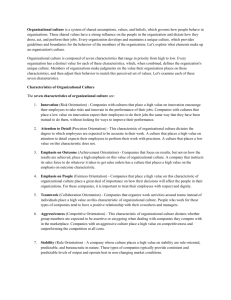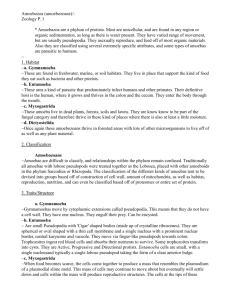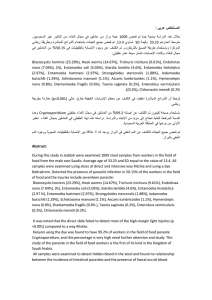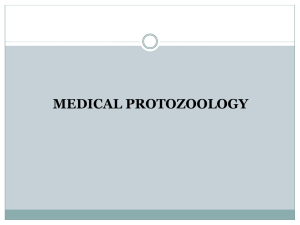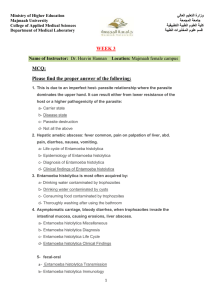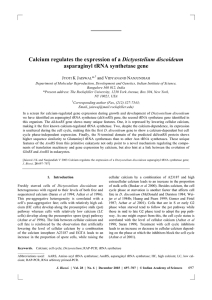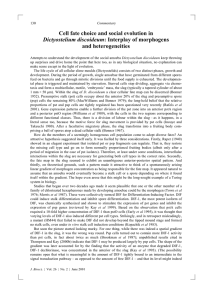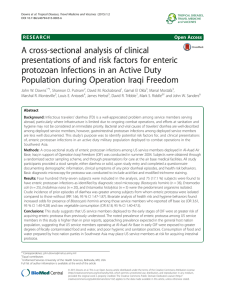Folie 1
advertisement
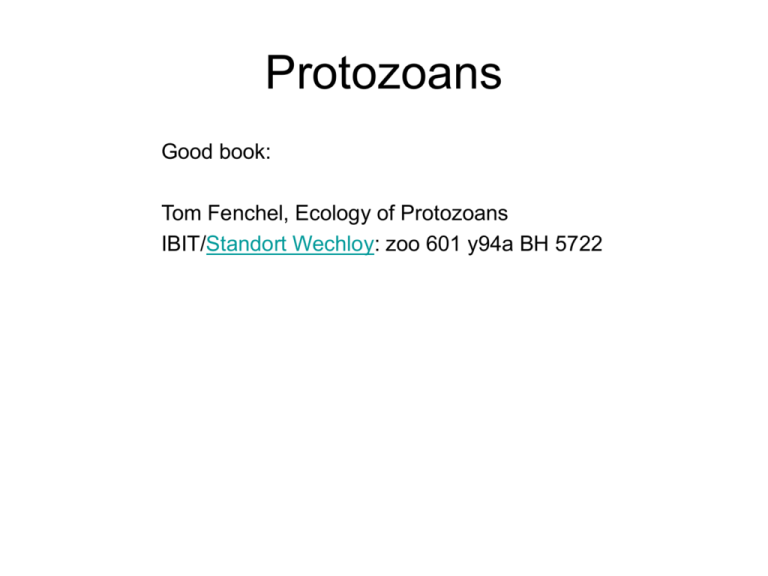
Protozoans Good book: Tom Fenchel, Ecology of Protozoans IBIT/Standort Wechloy: zoo 601 y94a BH 5722 Outer space? Eukaryotic kingdom: plants, animals, fungi, plus many microbial eukaryotes Formerly summarized as protists Together with prokaryotes: 5 major phylogentic groups of life Amazing size range! • 4 orders of magnitude • cover 1/3 of entire scale IMPORTANT: size corresponds to individual cell size Contrary: size in metazoans is given by number of cells Size limitation due to oxygen diffusion Mesoplankton 20-200 µm) Microplankton 20-200 µm) Nanoplankton 20-2 µm) Picoplankton 0.2-2 µm) Flagellates Occurence: water, humid niches Solitary, groups Characteristic flagellum Generally heterotroph assimilation via plastids, autotrophy Reproduktion mostly asexual, via fission Rhizopodes: Characteristic peudopodia, elongated structures Organelles to take up food Flat, amoeba Pathogenicity: Tooth plaque (Entamoeba gingivalis) Human gut Entamoeba coli,Entamoeba histolytica If imune system of host is weak, they turn into pathogenic forms, e.g. prey on erythrocytes Sporozoa: Characteristic apical structures Conoid: Penetration of host cell, live exclusively as parasites (plasmodium vivax, Malaria; fever pulses when sporozoa multiply in erythrocytes) Reproduktion: mostly haploid, gametogenesis, sporogenesis Ciliates: Most highly organized life form among protozoa. Characteristic cilia Lokomotion via cilia beating Nuclear duality, i.e. one large nucleus (macronucleus, metabolism), one small nucleus (micronucleus, reproduction) Suspension feeders, and and direct predation on other protozoa or bacteria (via Cytostom) Food storage in vacuoles, enzymatic digestion Reproduktion: Sexual and asexual Nucleus Food vacuole Water expelling vacuole Foraminifera: Fossil records 109 years ago White cliffs of Dover Colonial protozoa Polykrikos schwartzi Zoothamnium hiketes dinoflagellate Volvox: colonial flagellate Intermediate between true multicellular organism and agglomeration of unicellular organism • Each sphere consists of up to 1000 individual cells • Within „mother“shere (ca. 500 µm) daughter colonies develop For more information see: http://www.hydro-kosmos.de/jahresz/herbst/hm2.htm#Wimperkugel • Cells are connected by plasma threads • Flagella point outwards, locomotion • Egg & sperm cells develop • Leave the mother sphere Borderline between unicellular and multicellular mode of life Movie: Dictyostelium discoideum See: www.vcell.de/genomstation/dictyostelium_discoideum.html Reproduction: Paramecium bursaria (with chlorella cells) Symbionts Parablepharisma pellitum Hypothesis: Anaerobic protozoan, produce H2, bacteria are methanogens which oxidise H2 with CO2 Alexandrium tamarense (dinoflagellate) • Red tides • Filter feeding mussles (mytilus, clams, oysters) • Paralytic shellfish poisening (PSP) Saxitoxin




